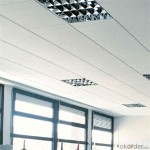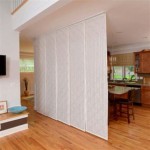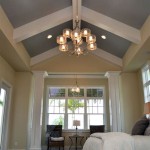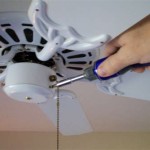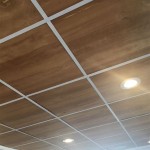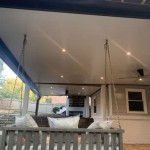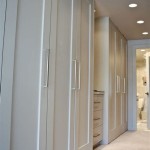Can You Hang a Swing From the Ceiling? Navigating Safety and Practicality
The notion of suspending a swing from the ceiling conjures images of relaxation and playful movement. While the concept holds appeal, the feasibility and safety of installing a ceiling-mounted swing necessitate careful consideration. Factors such as ceiling structure, weight capacity, hardware selection, and intended use all play crucial roles in determining whether such an installation is viable and safe.
The primary concern when evaluating a ceiling swing installation is the structural integrity of the ceiling itself. Not all ceilings are created equal, and their ability to bear weight varies significantly based on construction materials and design. Before proceeding with any installation, a thorough assessment of the ceiling structure is essential to ensure it can safely support the intended load.
Understanding Ceiling Types and Weight-Bearing Capacity
Different ceiling types possess varying degrees of load-bearing capacity. Common residential ceiling structures include wood joists, concrete slabs, and drywall ceilings. Wood joist ceilings, prevalent in many homes, consist of horizontal beams supporting the ceiling surface. The strength of a wood joist ceiling is determined by factors such as the size and spacing of the joists, the type of wood used, and the overall span of the joists.
Concrete slab ceilings, often found in apartments and commercial buildings, generally offer superior weight-bearing capacity compared to wood joist ceilings. The reinforced concrete construction provides a robust and stable platform for suspending heavy objects. However, even with a concrete ceiling, it's vital to determine the precise load-bearing capacity and consult with a structural engineer if needed.
Drywall ceilings, by themselves, are not structurally sound enough to support a swing. Drywall is a lightweight material designed primarily for aesthetic purposes and lacks the strength to withstand the dynamic forces exerted by a swinging motion. Attempting to hang a swing directly from drywall is extremely dangerous and will likely result in the ceiling collapsing. If a drywall ceiling conceals structural joists or a concrete slab, careful planning and proper hardware selection are crucial to ensure the swing is anchored to the supporting structure, not just the drywall.
Determining the weight-bearing capacity of a ceiling often involves consulting building codes, reviewing architectural plans, or engaging a qualified structural engineer. A structural engineer can perform calculations to assess the ceiling's load-bearing capacity and recommend appropriate installation methods and hardware.
Selecting Appropriate Hardware for Ceiling Swing Installation
Once the ceiling's structural integrity has been verified, the next step is to select appropriate hardware for attaching the swing. The hardware must be rated to support the combined weight of the swing, the user, and any potential dynamic forces generated during swinging. Using undersized or inadequate hardware can lead to catastrophic failure and serious injury.
For wood joist ceilings, lag screws or through bolts are commonly used to secure the swing mounting hardware to the joists. Lag screws are large, heavy-duty screws that are driven directly into the wood. Through bolts, on the other hand, pass completely through the joist and are secured with a nut and washer on the opposite side. Through bolts generally offer greater holding power than lag screws, especially when dealing with heavier loads or softer wood.
When installing hardware into a concrete ceiling, expansion anchors or chemical anchors are typically employed. Expansion anchors are inserted into pre-drilled holes and expand as a bolt is tightened, creating a secure grip within the concrete. Chemical anchors involve injecting a specialized adhesive into the hole before inserting the anchor, providing an even stronger and more reliable bond.
Eyebolts, S-hooks, and chains are essential components for connecting the swing to the ceiling mounting hardware. Eyebolts provide a secure attachment point for the swing, while S-hooks facilitate easy connection and disconnection. Chains allow for adjusting the swing's height. All hardware components must be made from high-quality, corrosion-resistant materials and have a weight rating that exceeds the expected load. It is recommended to select hardware specifically designed for hanging swings or similar applications, as these products are typically tested and certified for safety.
Proper installation of the hardware is just as critical as selecting the right components. Drilling pilot holes to the correct size and depth is essential for ensuring the hardware engages properly and doesn't damage the ceiling structure. Tightening bolts and screws to the manufacturer's recommended torque specifications is also important to prevent loosening over time.
Considering the Intended Use and Safety Precautions
The intended use of the swing and the age and abilities of the users should heavily influence the decision-making process. A swing intended for small children will require different considerations than a swing designed for adults. The weight capacity of the swing and hardware must be sufficient to accommodate the heaviest potential user, with a significant safety margin factored in.
The location of the swing within the room is also an important consideration. There should be ample space around the swing to allow for unrestricted movement without colliding with walls, furniture, or other objects. A soft landing surface, such as a rug or padded mat, should be placed beneath the swing to cushion falls. It is also essential to ensure adequate headroom above the swing to prevent users from hitting their heads on the ceiling.
Regular inspection of the swing and hardware is crucial for identifying signs of wear and tear. Check for loose bolts, frayed ropes or chains, and cracks or other damage to the swing seat or mounting hardware. Any damaged or worn components should be replaced immediately to prevent accidents. It is recommended to establish a regular maintenance schedule for inspecting and maintaining the swing, especially in high-use environments.
Supervision is paramount, especially when children are using the swing. Adult supervision can help prevent misuse, ensure safe swinging practices, and quickly address any potential hazards. Clear rules regarding swing usage should be established and enforced to minimize the risk of accidents. These rules may include limitations on the number of users, restrictions on excessive swinging, and prohibitions on dangerous activities such as jumping off the swing.
Liability is also a vital consideration, particularly if the swing is installed in a public or commercial setting. Ensuring proper insurance coverage is in place to protect against potential personal injury claims is essential. Consulting with an attorney or insurance professional may be necessary to determine the appropriate level of coverage.
Beyond the structural and mechanical considerations, the psychological impact of a ceiling swing should not be overlooked. For some individuals, the feeling of being suspended and swinging can be therapeutic and calming. For others, it may trigger feelings of anxiety or unease. Consider the potential psychological effects on all users before installing a ceiling swing.
In some cases, it may be more practical and safer to opt for a freestanding swing set instead of a ceiling-mounted swing. Freestanding swing sets offer the advantage of portability and require no modifications to the ceiling structure. They are also available in a wide range of sizes and designs to suit different needs and preferences. While freestanding swing sets may not offer the same aesthetic appeal as a ceiling-mounted swing, they can provide a safe and enjoyable swinging experience.
Before undertaking any ceiling swing installation project, it is always advisable to consult with qualified professionals, such as structural engineers, contractors, and insurance providers. These experts can provide valuable guidance on assessing the ceiling structure, selecting appropriate hardware, ensuring compliance with building codes, and mitigating potential safety risks. Their expertise can help ensure that the swing is installed safely and correctly, providing years of enjoyment without compromising the structural integrity of the building or the well-being of its occupants.
The decision of whether or not to hang a swing from the ceiling necessitates a thorough evaluation of multiple factors. A responsible approach involves prioritizing safety, adherence to building codes, and expert consultation. While the allure of a ceiling swing is undeniable, a careful and informed assessment is essential to ensure a safe and enjoyable experience.

Ceiling Swing Mount Rafter Bars Platform Not Included

How To Safely Install An Indoor Swing For Your Kids Smart Playrooms

Everything You Need To Know About Hanging An Indoor Swing

How To Hang A Hammock Chair From The Ceiling Erfly House

Style With Cents How To Hang A Swing Or Trapeze In Your Home

How To Hang A Hammock Chair From The Ceiling Erfly House

How To Hang A Swing Chair From Ceiling Joist Hunker

Tips To Hang A Porch Swing Lolly Jane

How To Hang A Porch Swing Through Vinyl Ask This Old House

How To Hang A Hammock Chair From The Ceiling Erfly House
Related Posts

